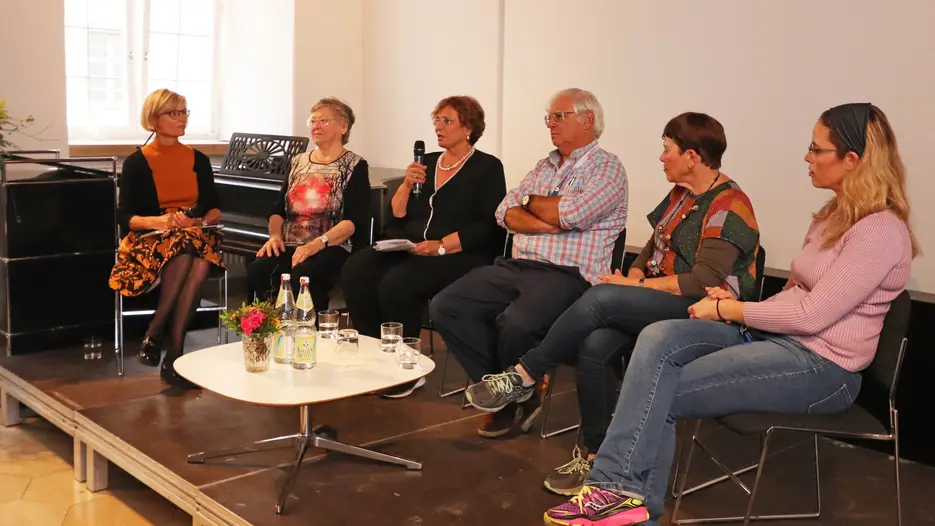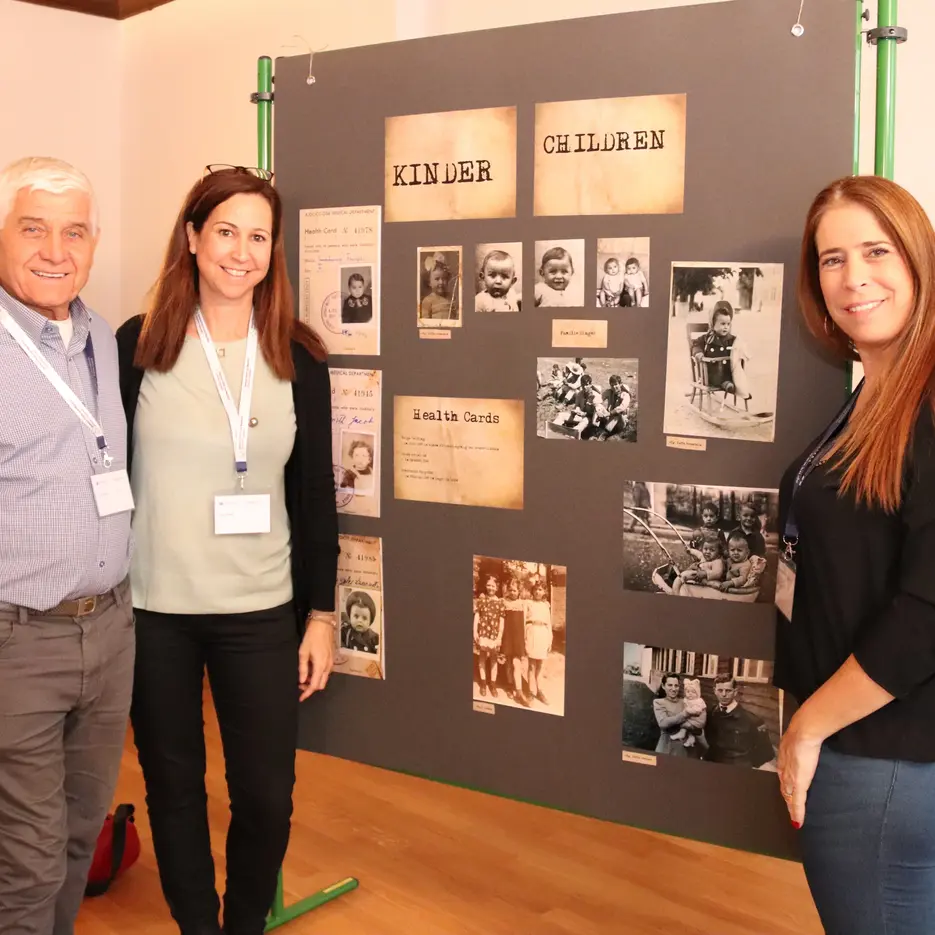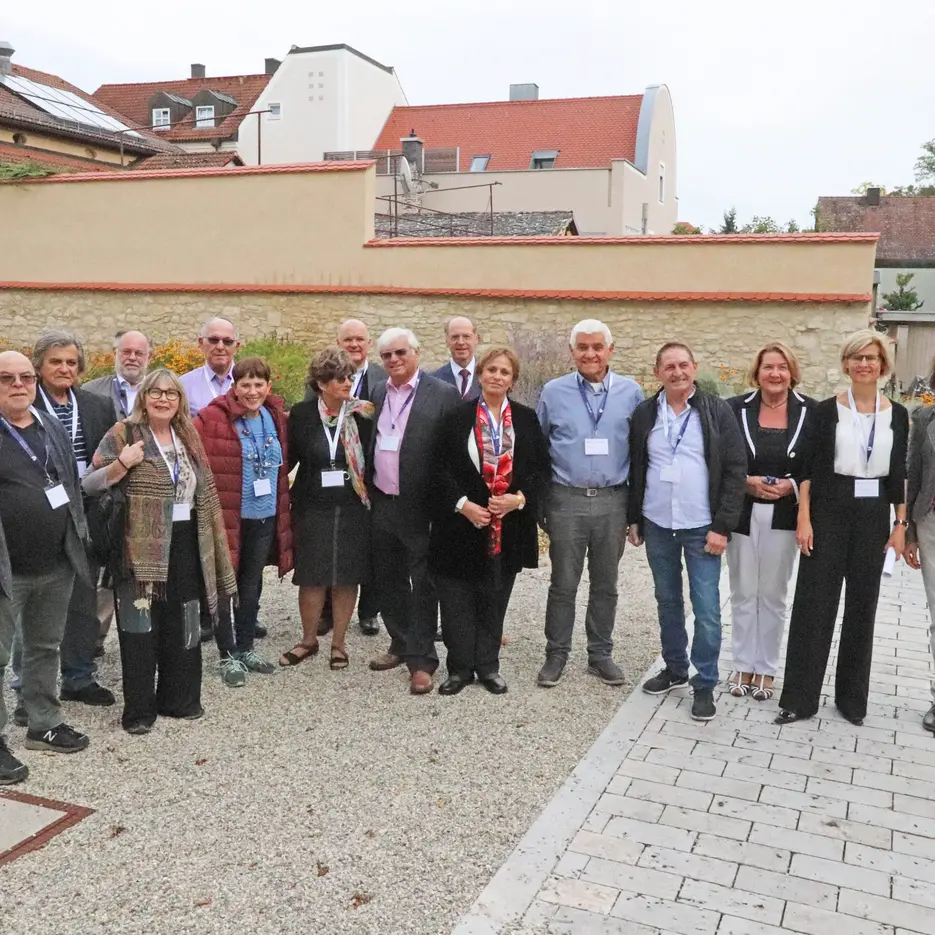What is today’s youth hostel in Eichstätt served as a hospital for the camp inhabitants back then, where approx. 150 children were born at the time. The camp was also home to many young children and teenagers. In the context of their investigations, Dr. Julia Devlin (Head of the KU Center for Flight and Migration) and the Eichstätt historian Dr. Maximilian Ettle, who jointly initiated the symposium, found out that ten of them now lived in Israel. They were invited to attend the conference in Eichstätt. For many of them and their relatives, it was the first time that they visited their birthplace which is still registered in their identity documents. It was only at the symposium, when some of them learned about each other’s existence for the first time. During the course of the conference, the “Eichstätt babies” provided their fellow guests with an insight into the cruel fate of their families that they shared and that had brought them to the Eichstätt camp.
The father of Shulamith Zakay, who was born in 1938 in today’s Ukraine, was arrested without cause in 1939. He lost his life in an airstrike in 1942. Shulamith and her mother were deported to Siberia when she was a baby. After the war, they were given the opportunity to return home; however, they had to face new pogroms, forcing them to flee to Eichstätt via Czechoslovakia and Austria. Also the parents of other contemporary witnesses who shared their story had to endure similar experiences of displacement and flight. Shulamith Zakay, who was six years old when they lived in Eichstätt, has many good memories of the time: “We found our ways back to life. The hunger was gone. I ate my first ice cream in Eichstätt, went to the movies and my mother worked in the camp’s kindergarten”. However, there was hardly any contact with the local population, partly due to the fact that the responsibility for administration of the camp was transferred to the inhabitants themselves by the UNRRA. Jakob Noy, who was born in Eichstätt, also talked about the significance of the camp for his parents: “This was the first place of hope and light after six years of darkness. They told me that, for them, my birth in Eichstätt was the beginning of a new future.” His story was also similar to what other witnesses told with regard to one specific aspect: Their parents told them next to nothing about the atrocities they had to endure in the years before they came to Eichstätt. “It was only after my father’s death that I learned he had been deported to Siberia during the war”, says Bella Steiner. In general, the parents of the Eichstätt babies wanted to see their children grow up as untroubled as possible and blocked out the past. The newly founded state of Israel offered them a perspective for a future that was unconceivable before and that also manifested itself in a linguistic distance in daily life: “My sister and I were speaking Yiddish at home, but we avoided it in public because she did not want us to be recognized as immigrants”, explained Bella Steiner. “Although we are referred to as the ‘Eichstätt babies’, I have always felt like an adult because I had to support my parents”, added Yaffa Orenstein. Despite her successful career in Israel, deep down she still felt like an immigrant.
The works by Krista Svalboas and Lars Alverson from the USA added an artistic and personal approach to the DP camp topic. Svalboas’ parents come from the Baltic states and have spent many years in different displaces persons’ camps in Germany. Together with Alverson, she researched and visited the places of the former camps and created a photography documentation of the locations. These scenes are depicted together with letters addressed to the US, Canadian and British governments and written by Baltic refugees in the hope of avoiding repatriation to the Soviet Union. In this way, the artist combines the fading memories of her parents’ generation with her own experiences. Next year, she will amongst others be exhibiting her works at the Riga photo museum.
At the opening event of the conference, Chairman of the Foundation Council, Peter Beer, emphasized: “Fleeing from history means fleeing from the future. We have to confront history – both the dark and bright sides of it – in order to be able to learn from it for our future.” Also Ministerialrat Werner Karg underlined the importance of the culture of memory in his welcoming address. KU Vice President Prof. Dr. Markus Eham stressed that memory also held the potential for reconciliation. In this light, the contemporary witness Shulamith Zakay expressed her wish for her descendants to be able to value stability and the freedom of body and soul. In his speech, Eichstätt mayor Andreas Steppberger reminded of the social commitment for refugees that the city’s society set up in the face of current refugee movements as a clear signal for a peaceful co-existence.
Not only for the ‘Eichstätt babies’, but also for numerous other participants, the symposium and its nine scientific presentations offered in-depth insights into the history of the DP camp in Eichstätt and other places within the American and French occupation zone and Austria. The conference was enriched by additional contributions on the strategy of self-help in DP camps pursued by the UNRRA as well as by general considerations on the topic of historical education.
The detailed conference program and a list of speakers is available on the website of the Center for Flight and Migration.


